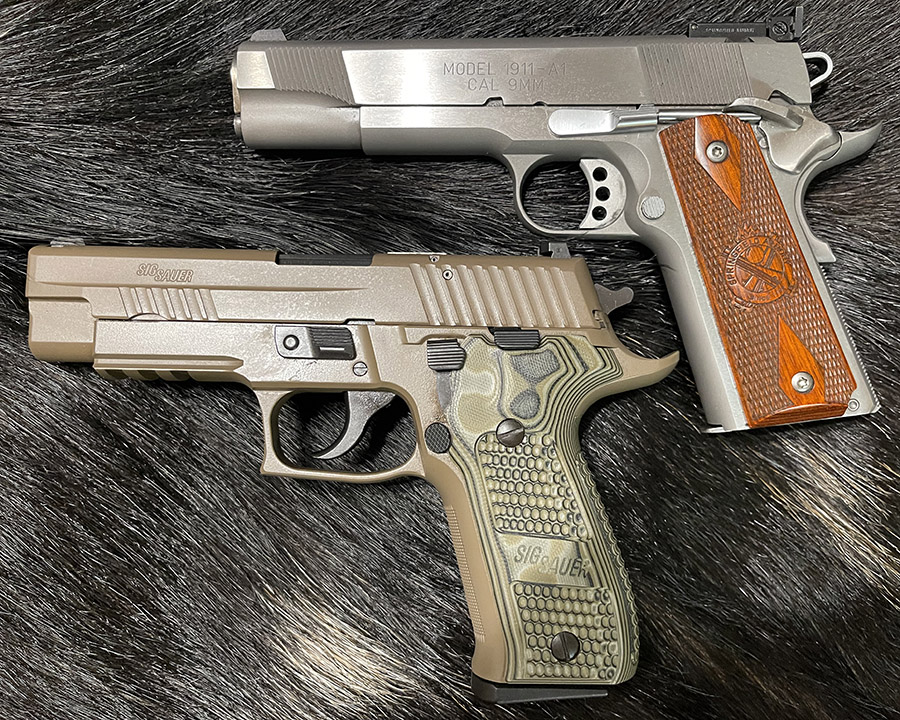I recently tested two 9mm loads to assess:
-
- How 124-grain roundnose Boudreau powder-coated bullets performed in the SIG P226 and the Springfield Armory 1911, and
- The effect of seating depth on accuracy with 124-grain roundnose Ranier plated bullets in the Springfield Armory 1911.
A friend of mine recommended Boudreau powder-coated bullets. They are reasonably-priced and I liked the look. Ralph, the Boudreau master caster, recommended seating the bullets at 1.055 or thereabouts, which is deeper into the case than I usually go but that’s what I did with these. They look pretty cool. One of my shooting buddies observed that the loaded rounds looked like lipstick. That’s good; that’s the look I was going for.
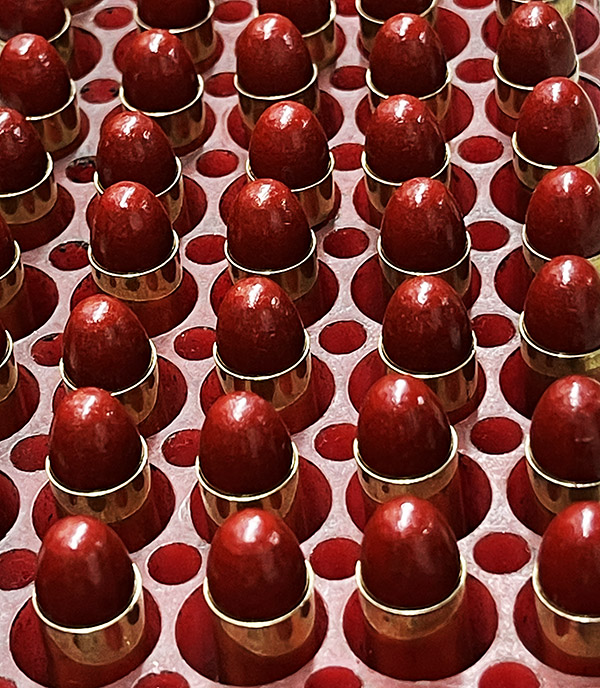
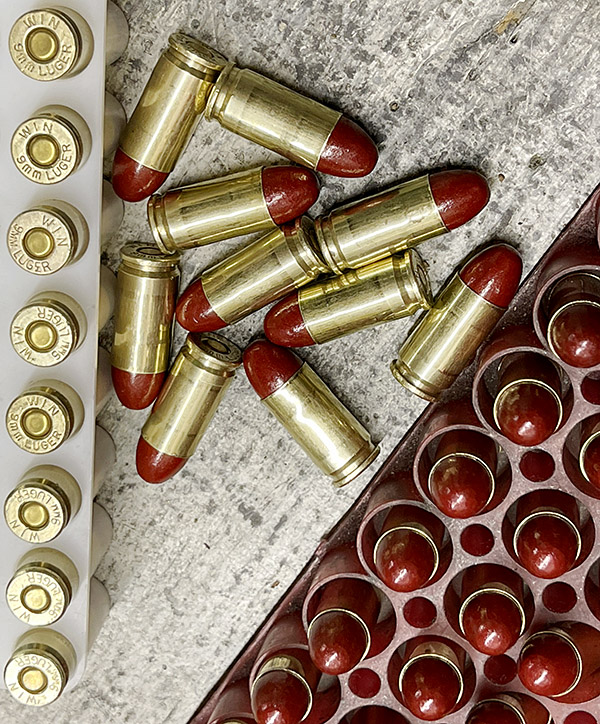
These are the Ranier plated bullets.
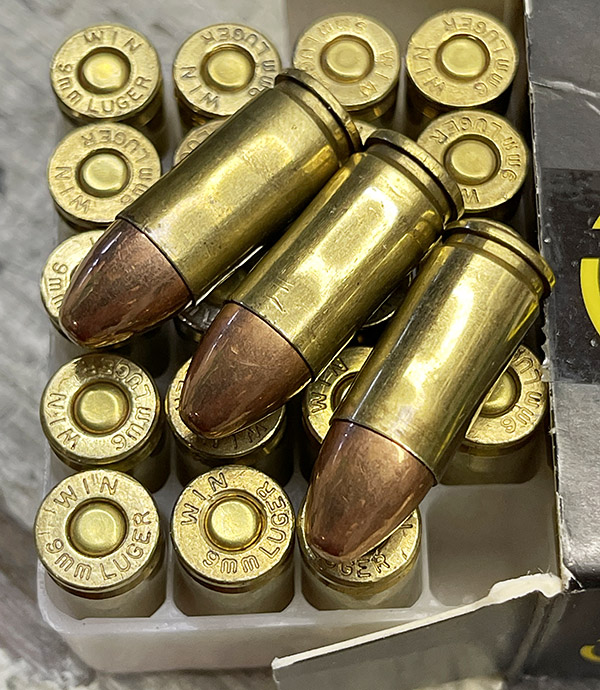
I tried Accurate No. 5 propellant for the first time. My local reloading shop had this propellant in stock so I thought I would try it (these days, you take what you can get). Accurate No. 5 is a flake powder like Unique, but it burns much cleaner. It doesn’t leave the sooty residue Unique leaves, and there’s much less smoke (that’s partly due to the powder-coated bullets, too).
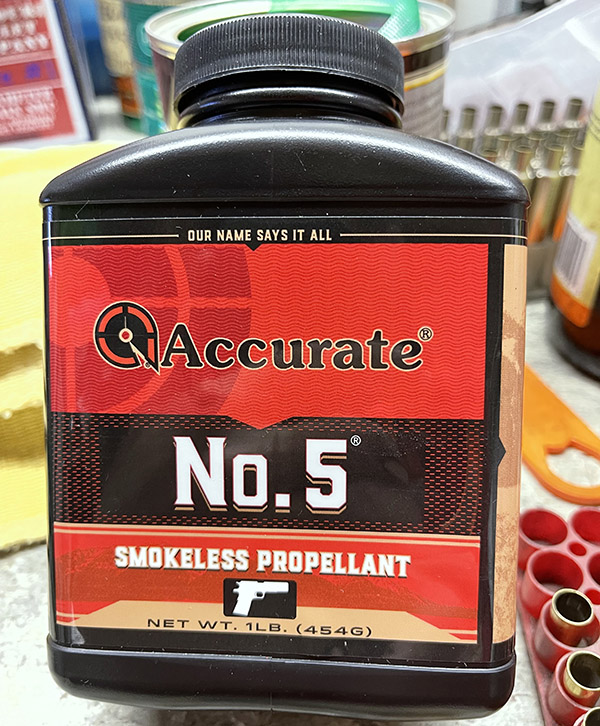
I also wanted to evaluate bullet seating depth’s effects on accuracy with the Ranier bullets. There’s nothing too scientific or rigorous in this evaluation; I just wanted to get a feel if the 1911 was more accurate or less accurate with the bullets seated deeper in the case or further out (I didn’t do this evaluation with the SIG).
My load manuals don’t make a distinction between powder-coated bullets versus other bullets. I read some comments online that indicate powder coated bullets get the same velocity with lighter propellant charges. I finally found some data on the Hodgdon powder website for 124-grain powder coated bullets, and it showed the charge range running from 4.6 to 5.4 grains of their Accurate No. 5 powder. This was a quick-look test, so I loaded 10 rounds at 4.6 grains, 10 rounds at 4.8 grains, 10 rounds at 5.0 grains, 10 rounds at 5.2 grains, and finally, 10 rounds at 5.4 grains. As mentioned above and per Ralph’s suggestion I seated all bullets to a cartridge overall length (COAL) of 1.055 inches. I fired one 5-shot group at each charge level with the 1911, and one single 5-shot group at each charge level with the SIG P226, all at 50 feet. Like I said above, it was not a rigorous assessment; I just wanted to get a feel for what worked and what didn’t. Here are the results:

These are the targets (the Springfield 1911 target is on the left and the SIG P226 target is on the right). I worked my way from the top down and left to right with each charge weight, so the top bullseye on each target is with 4.6 grains of Accurate No. 5 and the bottom right one on each target is with 5.4 grains of Accurate No. 5).
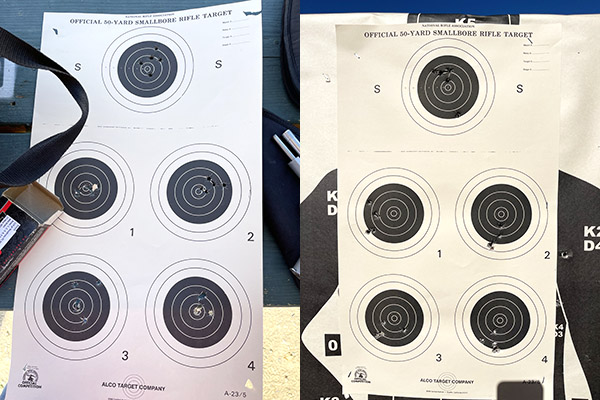
All of the powder-coated-bullet loads functioned perfectly in both guns and none of the cartridges exhibited any pressure signs. The heaviest charge on the Accurate site (5.4 grains) gave the best accuracy in both guns. That’s the load I’m going to go with on future loads with this bullet. The load had modest recoil and it was pleasant shooting. These are good bullets and they function well with the Hodgdon-recommended charges. I will also mention that I was a little surprised: This was the first time the Springfield Armory 1911 outshot the SIG. In the past, my SIG P226 had been more accurate than any 9mm handgun I ever tested, including my 1911.
The next test was to assess the effects of seating depth on accuracy. My buddy Paul and I had a discussion on this topic and we both realized that after sending 9mm projectiles downrange for 60 years and evaluating powder, bullets, primers, and more, we had never investigated bullet seating depth as a variable in 9mm reloading. The 9mm cartridge is a short one, and most semi-autos have generous chambers to improve reliability. The combination could naturally lead to the cartridges swimming around in the chamber, perhaps more so than a .45 ACP cartridge. It stands to reason that a longer cartridge (i.e., not seating the bullet as deeply in the case) could minimize movement of the cartridge in the chamber and improve accuracy. But there are other requirements at play, like getting the cartridges in the magazine, not seating the bullet so far out that it hits the rifling before the round is fully chambered, and reliable feeding of the bullets from the magazine into the chamber. So I thought I’d run a quick experiment.
For these tests I used Ranier 124-grain plated roundnose bullets and the Springfield Armory 1911. It was unscientific. I made 25 rounds with 6.4 grains of Accurate No. 5 (a max load) and the Ranier bullets seated to a COAL 1.100 inches (which is about what I would normally do), and another 25 rounds with the same powder charge, but with the bullets seated to a COAL of 1.156 inches (which is a little more than a twentieth of an inch further out). Here are the results:

It was an easy load to shoot and there were no flattened primers or other pressure signs. All loads functioned reliably in the 1911. There was little to no leading with the Ranier plated bullets, even though this was a max load.
Here’s what the targets looked like. The top two little guys are with the bullets seated out for a COAL of 1.156 inches; the bottom two little guys are with the bullets seated deeper and a COAL of 1.100 inches.
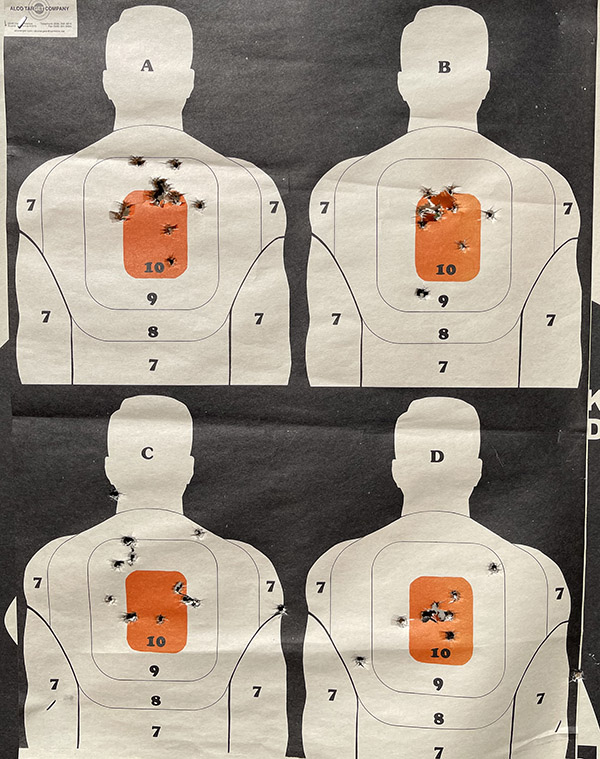
What this quick look says to me that the Ranier plated bullets are more accurate if they are seated further out. These worked in my 1911 magazine; I didn’t check them in the SIG P226 magazine (nor did I shoot this load in the SIG). If I was to do this test again, I’d check to make sure the longer cartridges would fit in the SIG’s shorter magazine and I’d also test them for accuracy in the SIG.
I haven’t assessed the Boudreau powder-coated bullets at different seating depths. I will get to that later. I’ve got a bunch of the Ranier bullets, and a bunch of the powder-coated bullets. Primers…that’s another story. Everybody needs primers.
The standard warning: The load data included in this blog are for my guns. Yours may be different.
Want more gun stories? Please click on the popup ads!
Sign up here for a free subscription:
More Tales of the Gun!

